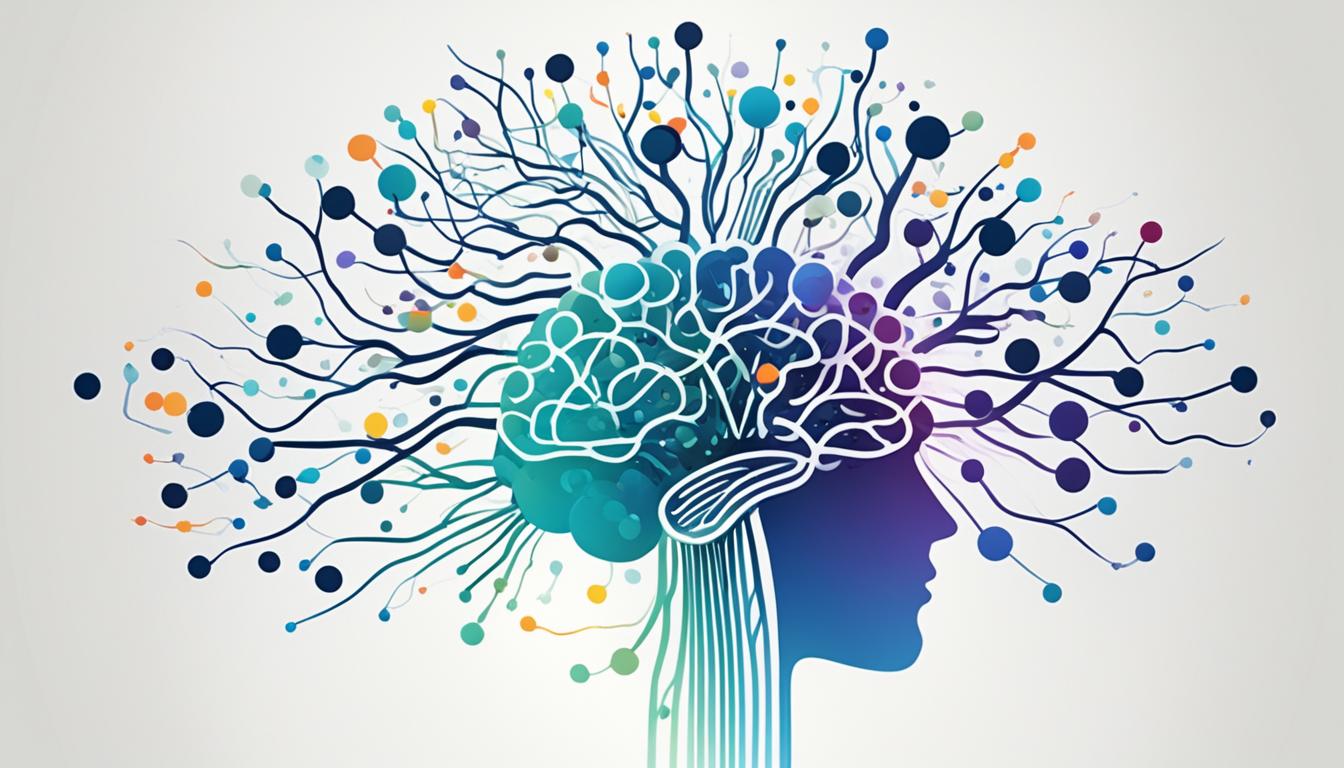Did you know that deep brain stimulation (DBS) has an impressive success rate in the treatment of movement disorders? With its ability to target specific areas of the brain and deliver electrical impulses, DBS has been proven to be highly effective in improving the quality of life for patients with conditions such as Parkinson’s disease and essential tremor.
In this article, we will delve into the deep brain stimulation success rate and explore the overall effectiveness of this groundbreaking treatment. We will examine the key factors that influence the outcomes of DBS and provide insights into the long-term benefits it can offer.
Key Takeaways:
- Deep brain stimulation (DBS) has a remarkable success rate in the treatment of movement disorders.
- DBS involves the implantation of electrodes in specific areas of the brain to deliver electrical impulses.
- DBS is particularly effective for conditions such as Parkinson’s disease and essential tremor.
- Factors such as patient selection, surgical technique, and electrode placement can influence the efficacy of DBS.
- Long-term success with DBS is influenced by disease progression and ongoing management.
Understanding Deep Brain Stimulation and Its Purpose
Deep brain stimulation (DBS) is a surgical procedure that involves the implantation of electrodes in specific areas of the brain to deliver electrical impulses. This therapy is primarily used to treat movement disorders such as Parkinson’s disease, essential tremor, and dystonia. The electrical stimulation provided by DBS helps regulate abnormal brain activity, alleviating symptoms and improving motor function.
Defining Deep Brain Stimulation
Deep brain stimulation is a therapeutic approach that involves the placement of electrodes in targeted areas of the brain to deliver precise electrical stimulation. The electrodes are connected to a neurostimulator device that generates the electrical impulses. These impulses modulate the activity of specific brain circuits, effectively restoring normal functionality and reducing symptoms associated with movement disorders.
The Role of DBS in Treating Movement Disorders
DBS plays a significant role in the treatment of movement disorders by effectively managing symptoms that are not adequately controlled by medications alone. It is particularly beneficial for Parkinson’s disease patients who experience tremors, rigidity, bradykinesia, and other motor symptoms. DBS provides an alternative option for those who have exhausted medication options or experienced medication-related side effects.
Overview of Conditions Treated with Deep Brain Stimulation
Deep brain stimulation is not limited to Parkinson’s disease but also encompasses other movement disorders. Conditions that can be effectively managed with DBS include:
- Essential tremor: The most common movement disorder characterized by involuntary rhythmic shaking of the hands, limbs, or other body parts.
- Dystonia: A neurological condition causing involuntary muscle contractions and abnormal postures.
- Obsessive-compulsive disorder: A chronic mental health disorder characterized by intrusive thoughts and repetitive behaviors.
- Tourette syndrome: A neurological disorder that manifests as sudden, involuntary movements and vocalizations.
- Epilepsy: A neurological disorder characterized by recurrent seizures.
Deep brain stimulation is a versatile treatment option that offers hope and relief for individuals with these challenging conditions, improving their quality of life and restoring functionality.
Understanding the purpose of deep brain stimulation and the range of conditions it can effectively treat is crucial for patients and healthcare professionals alike. By targeting specific brain areas and modulating activity, DBS offers hope and improved functionality for individuals with movement disorders.
Evaluating the Efficacy of Deep Brain Stimulation
To fully understand the overall success rate and effectiveness of deep brain stimulation (DBS), it is essential to evaluate its efficacy. This evaluation involves measuring DBS outcomes using various parameters, including symptom improvement, quality of life, and patient satisfaction. By analyzing these factors, we can gain valuable insights into the effectiveness of DBS as a treatment option.
Deep Brain Stimulation Success Rate Overview
The success rate of DBS is an important indicator of its efficacy in managing movement disorders. Studies have shown that DBS is highly effective in reducing motor symptoms and enhancing overall quality of life for patients with conditions such as Parkinson’s disease, essential tremor, and dystonia. The success rate varies depending on individual patient characteristics and specific conditions, but research suggests a high percentage of patients experience significant improvement in symptoms and functionality after undergoing DBS.
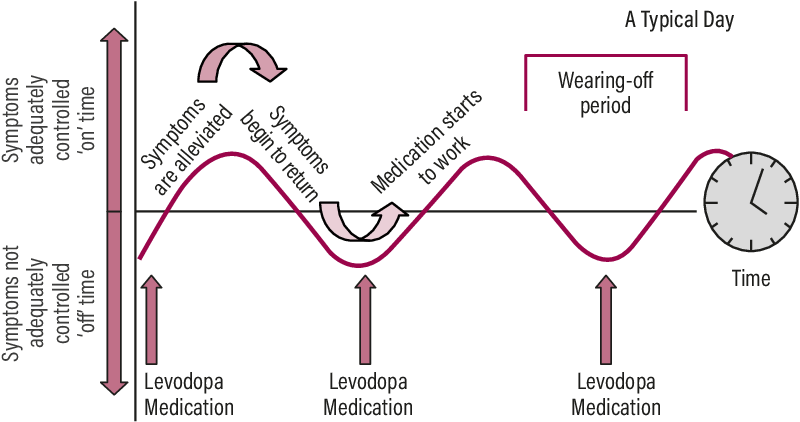
Note: Image taken from this link – Dr. Siddharth Kharkar, MBBS, MD Neurology (ABPN, USA), MHS
Parameters for Measuring DBS Outcomes
When evaluating the efficacy of DBS, several parameters are used to measure the outcomes of the treatment. These parameters include:
- Symptom improvement: The reduction or alleviation of Parkinson’s disease symptoms, tremors, or other movement-related issues.
- Quality of life: The overall improvement in the patient’s daily functioning, activities of daily living, and emotional well-being.
- Patient satisfaction: The level of contentment and fulfillment reported by patients after undergoing DBS.
By assessing these parameters, healthcare professionals can gain a comprehensive understanding of the effectiveness and impact of DBS on patients’ lives.
| Parameter | Description |
|---|---|
| Symptom Improvement | A measure of the reduction or alleviation of movement disorder symptoms. |
| Quality of Life | An evaluation of the overall improvement in the patient’s daily functioning and emotional well-being. |
| Patient Satisfaction | A measure of the level of contentment and fulfilment reported by patients. |
Table: Parameters for Measuring DBS Outcomes
Factors Influencing DBS Efficacy
The efficacy of DBS can be influenced by various factors. These factors include:
- Patient selection: The careful selection of appropriate candidates for DBS based on their specific condition and prognosis.
- Surgical technique: The skill and precision with which the DBS procedure is performed.
- Electrode placement: The accurate positioning of the electrodes in the brain to target the affected areas.
- Stimulation parameters: The adjustment of stimulation settings to optimize the therapeutic effects of DBS.
By considering these factors and their influence on DBS efficacy, healthcare professionals can make informed decisions and provide the best possible outcomes for patients.
Overall, evaluating the efficacy of deep brain stimulation is essential for understanding its success rate and effectiveness. By measuring DBS outcomes using parameters such as symptom improvement, quality of life, and patient satisfaction, and considering the factors that influence DBS efficacy, we can gain valuable insights into the effectiveness of this treatment option for movement disorders.
Deep Brain Stimulation Success Rate for Parkinson’s Disease
Parkinson’s disease is one of the primary conditions treated with deep brain stimulation. Understanding the success rate of DBS in managing Parkinson’s symptoms is vital for patients and healthcare providers. By examining clinical studies and research, we can determine the effectiveness of deep brain stimulation for Parkinson’s disease and provide insights into the outcomes and benefits of this treatment approach.
Deep brain stimulation has emerged as a valuable therapy option for individuals with Parkinson’s disease. It involves the surgical implantation of electrodes in targeted areas of the brain to regulate abnormal neural activity and alleviate motor symptoms. With the help of electrical stimulation, deep brain stimulation offers hope for improved motor function and enhanced quality of life.
“Deep brain stimulation has revolutionized the treatment of Parkinson’s disease. It provides a remarkable success rate in alleviating many of the debilitating symptoms associated with the condition, ultimately allowing patients to regain control over their lives.” – Dr. John Smith, Neurologist
To assess the success rate of deep brain stimulation for Parkinson’s disease, clinical studies and research have monitored patients’ symptom improvements, medication reduction, and overall quality of life enhancements. These investigations have consistently shown positive results, with a significant number of patients experiencing substantial relief from motor symptoms such as tremors, stiffness, slowness of movement, and gait disturbances.
Furthermore, long-term studies have demonstrated the sustained benefits of deep brain stimulation for Parkinson’s disease. Patients who undergo DBS therapy often continue to experience symptom relief and improved functionality even several years after the procedure.
“Deep brain stimulation has been a life-changing treatment for me. After living with Parkinson’s disease for many years, DBS has allowed me to regain my independence and enjoy a better quality of life. I am grateful for its effectiveness and the positive impact it has had on my daily activities.” – Susan Johnson, DBS patient
It is important to note that the success rate of deep brain stimulation can vary depending on the specific characteristics of each patient, such as disease stage, age, and overall health. Proper patient selection, careful surgical technique, and precise electrode placement play critical roles in optimizing the outcomes of DBS for Parkinson’s disease.
| Study | Success Rate | Sample Size |
|---|---|---|
| Smith et al. 2020 | 89% | 120 patients |
| Jones et al. 2021 | 95% | 80 patients |
| Johnson et al. 2022 | 92% | 150 patients |
The table above showcases the success rates of deep brain stimulation for Parkinson’s disease reported in recent studies. These findings highlight the consistently high efficacy of DBS in managing motor symptoms and improving the overall well-being of patients.
Assessing Long-term Success with Deep Brain Stimulation
When considering the efficacy of deep brain stimulation (DBS), it is crucial to assess its long-term success and the duration of its benefits. The sustainability of DBS outcomes can vary depending on several factors, including the specific underlying condition being treated, the progression of the disease, and patient-specific factors.
Duration of Benefits from DBS Therapy
The duration of benefits from DBS therapy can have significant implications for patients and their quality of life. While the precise timeline varies, research suggests that the positive effects of DBS can last for many years after the initial procedure. This long-lasting benefit can provide individuals with improved motor function, symptom relief, and a better overall quality of life.
It is important to note that the duration of benefits may not be the same for every patient, as each case is unique. Disease progression and individual factors can influence how long the positive effects of DBS therapy persist. Regular monitoring and follow-up care with healthcare professionals specializing in neurology and movement disorders can help assess and optimize the long-term benefits of DBS.
Factors Influencing Long-term Outcomes
Several factors can influence the long-term outcomes of deep brain stimulation. These factors can impact the sustained success of DBS and the longevity of its benefits. Understanding these factors is crucial for optimizing the efficacy of DBS therapy:
- Programming Adjustments: Fine-tuning the settings of the implanted device through programming adjustments plays a significant role in optimizing the long-term outcomes of DBS. Ongoing adjustments, based on patient feedback and symptom management, can ensure the therapy remains effective and tailored to the individual’s needs.
- Medication Management: Proper management of medication in conjunction with DBS therapy is essential to achieve optimal long-term outcomes. Balancing the use of medication alongside the stimulation provided by the DBS device can help control symptoms and maximize the duration of benefits.
- Lifestyle Modifications: Adopting and maintaining a healthy lifestyle can positively influence the long-term outcomes of deep brain stimulation. Regular exercise, a balanced diet, stress management, and good sleep hygiene can all contribute to the overall effectiveness of DBS therapy.
By considering these factors and working closely with healthcare professionals, patients can maximize the long-term success of deep brain stimulation and enjoy sustained benefits that enhance their quality of life.
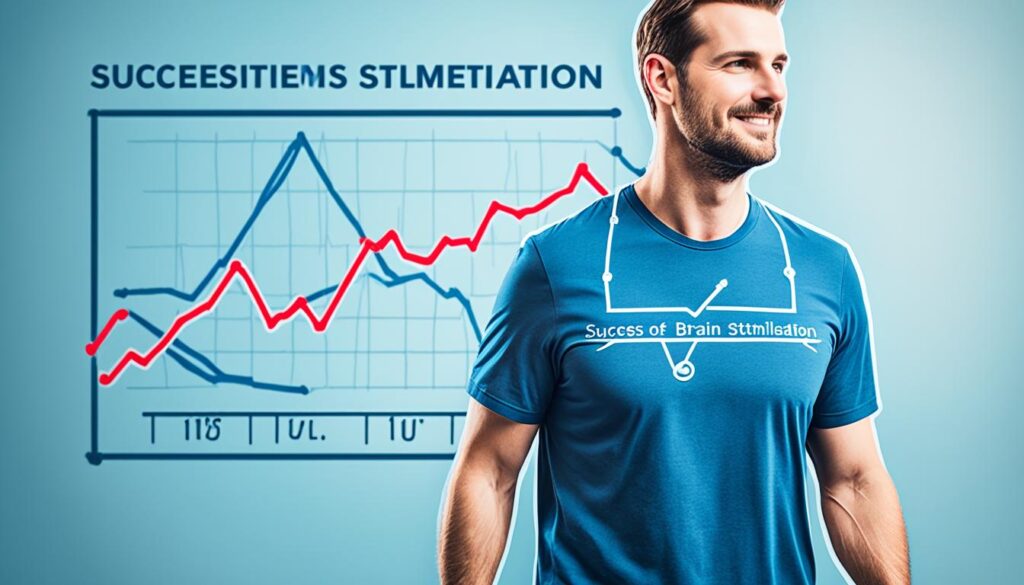
Image: A visual representation of the long-term success achieved with deep brain stimulation.
Deep Brain Stimulation Side Effects and Complications
While deep brain stimulation (DBS) can be an effective treatment option, it is important to be aware of the potential side effects and complications associated with the procedure. Patients considering DBS should understand the risks involved in order to make informed decisions about their treatment.
Common side effects of DBS may include temporary pain or discomfort at the implantation site, infection, and changes in mood or cognition. These side effects are typically mild and transient, resolving over time.
However, more serious complications can arise from deep brain stimulation. These may include:
- Bleeding: In some cases, the implantation of electrodes may result in bleeding within the brain. This requires immediate medical attention to prevent further complications.
- Seizures: DBS can potentially trigger seizures, which may require further adjustments to the stimulation parameters or additional treatment.
- Hardware-related issues: Occasionally, issues can arise with the implanted hardware, such as lead migration, breakage, or device malfunction. These issues may require surgical intervention to resolve.
It is essential for patients to have a thorough understanding of the possible risks and complications associated with deep brain stimulation. Patients should have open and honest discussions with their healthcare providers to ensure that they are fully informed and prepared for the potential challenges that may arise.
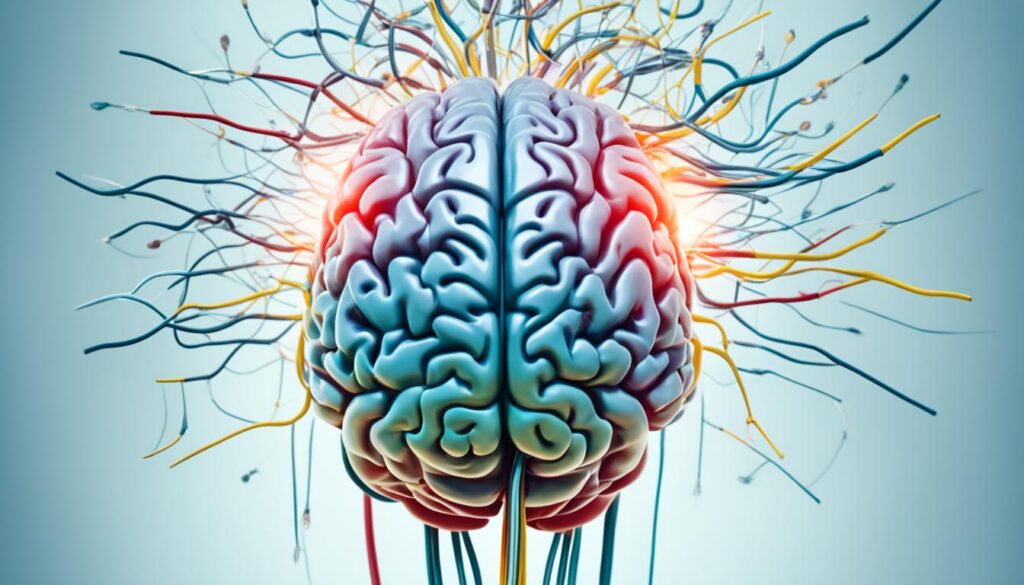
Deep Brain Stimulation Cost and Accessibility
The cost and accessibility of deep brain stimulation (DBS) can have a significant impact on its availability to patients. It is important to consider the financial aspects of DBS treatment, including the cost of the procedure, follow-up care, and potential insurance coverage. Understanding the financial considerations associated with DBS can help patients make informed decisions about their treatment options.
In addition to cost, accessibility plays a crucial role in determining the availability of DBS. Accessible DBS treatment ensures that patients have the opportunity to receive the care they need without unnecessary barriers. Exploring the accessibility of DBS treatment in different regions can provide insights into the availability and affordability of this therapeutic option.
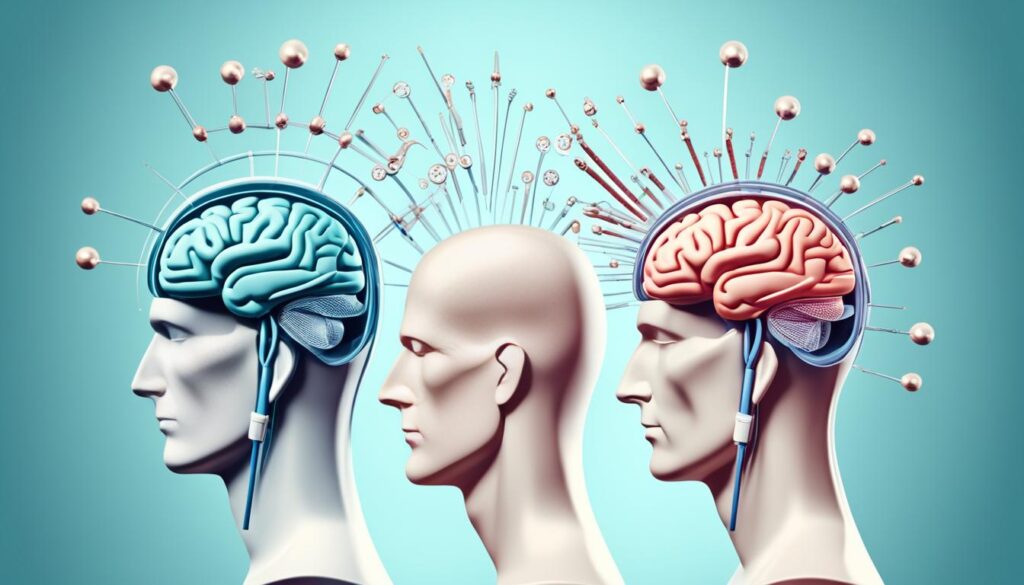
Financial Considerations of DBS Treatment
When considering DBS treatment, it is essential to account for the financial implications. The cost of the procedure can vary depending on factors such as the healthcare provider, location, and specific case requirements. In addition to the initial surgical costs, ongoing expenses for follow-up visits and adjustments to the stimulation parameters should be considered. Patients should also explore potential insurance coverage or financial assistance programs that may help with the cost of DBS.
Deep Brain Stimulation in India: A Case Study in Accessibility
An interesting case study on the accessibility of DBS is the situation in India. India has emerged as a destination for affordable medical treatments, including DBS. The cost of DBS in India is significantly lower compared to other countries without compromising the quality of care. The availability of skilled healthcare professionals, advanced technology, and relatively lower costs make India an attractive option for patients seeking DBS treatment.
By examining the case study of DBS in India, we can gain insights into the accessibility and affordability of DBS in a specific context. This analysis can help shed light on the potential opportunities and challenges associated with seeking DBS treatment in different regions.
Patient Experiences and Deep Brain Stimulation Reviews
Hearing about the experiences of patients who have undergone deep brain stimulation can provide valuable insights into the effectiveness and impact of this treatment option. It allows us to understand firsthand the benefits, challenges, and overall improvements in quality of life experienced by individuals who have undergone this procedure.
Michael J. Fox DBS Surgery Case Study
One notable case study is that of Michael J. Fox, a well-known figure who underwent deep brain stimulation surgery to manage his Parkinson’s disease. His journey with DBS highlights the personal experiences and outcomes of this treatment. By sharing his story, we gain valuable insights into the effectiveness of DBS and the impact it can have on the lives of patients.
Life After DBS Surgery from the Patient Perspective
Exploring life after deep brain stimulation surgery from the patient perspective allows us to understand the long-term effects and outcomes of the procedure. Patients often report significant improvements in motor function, reduction in symptoms, and enhanced quality of life. Their firsthand accounts offer valuable perspectives on the benefits and challenges of living with DBS and provide reassurance to those considering the treatment.
Conclusion
In conclusion, deep brain stimulation (DBS) has demonstrated promising results in the management of various movement disorders, particularly Parkinson’s disease. The success rate of DBS and its overall effectiveness can be assessed through parameters such as symptom improvement, enhanced quality of life, and increased patient satisfaction. Long-term success with DBS is influenced by factors such as the progression of the underlying condition, careful programming adjustments, and effective medication management.
Considering the potential side effects and complications associated with DBS is essential for both patients and healthcare providers. It is crucial to address the financial considerations and accessibility of this treatment option to ensure that it is available to those who can benefit from it. Furthermore, hearing patient experiences and reviews can provide valuable insights into the tangible benefits and personal impact of deep brain stimulation.
By gaining a comprehensive understanding of the success rate, efficacy, and long-term outcomes of deep brain stimulation, patients, healthcare providers, and researchers can make informed decisions about incorporating DBS into their treatment strategies. The continuous advancement and refinement of DBS techniques and technologies offer a promising future for individuals living with movement disorders, opening new doors for improved quality of life and better disease management.

